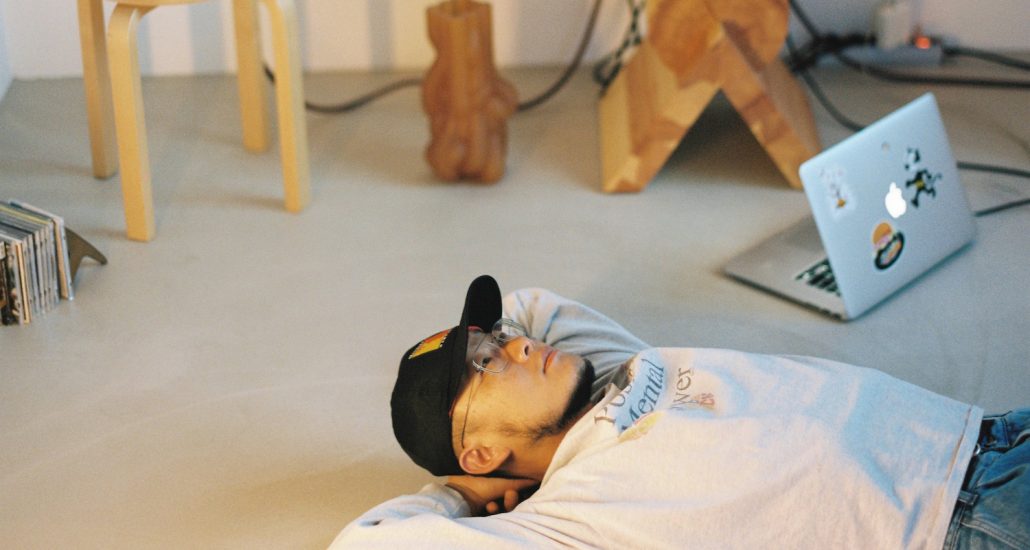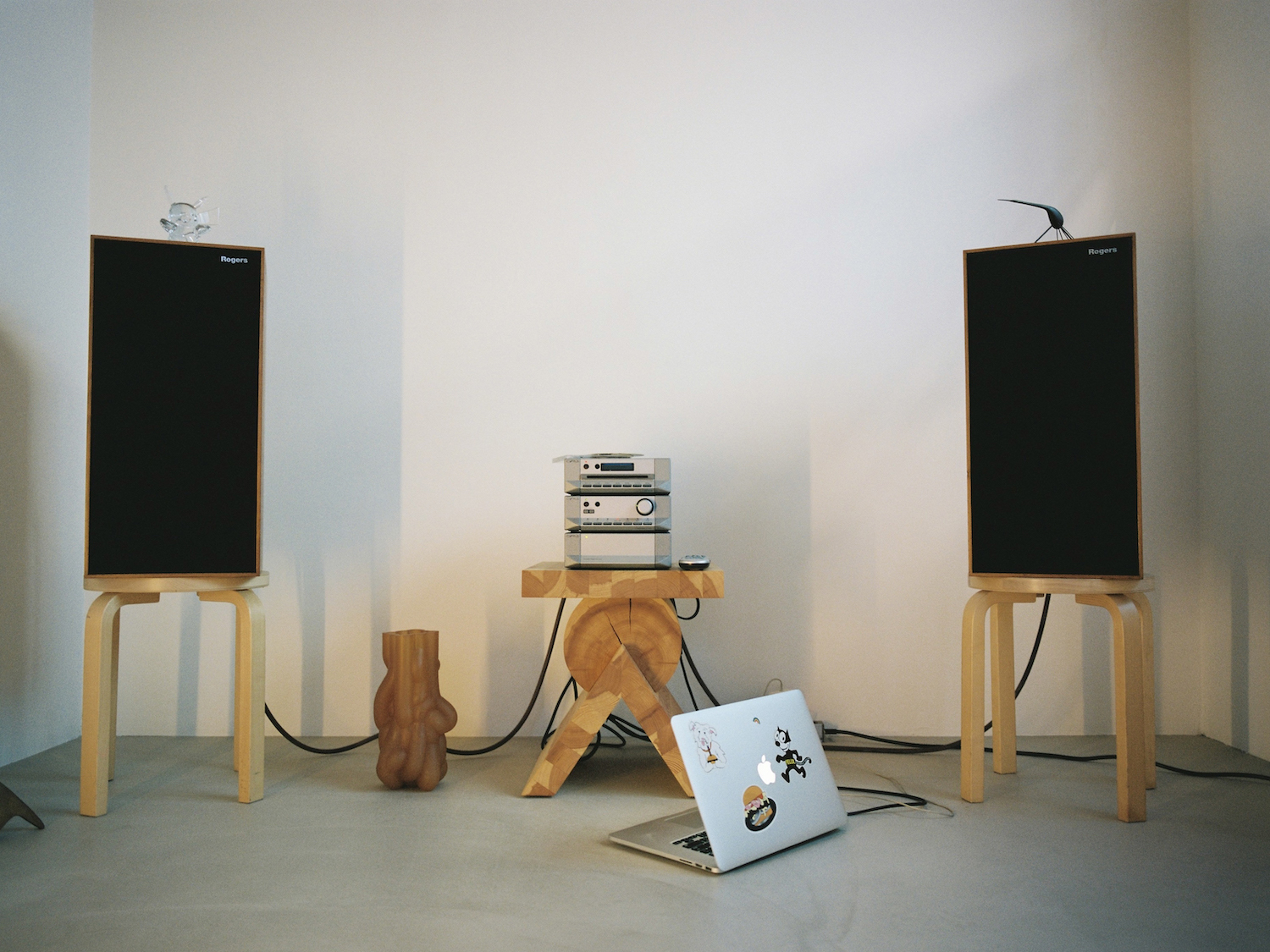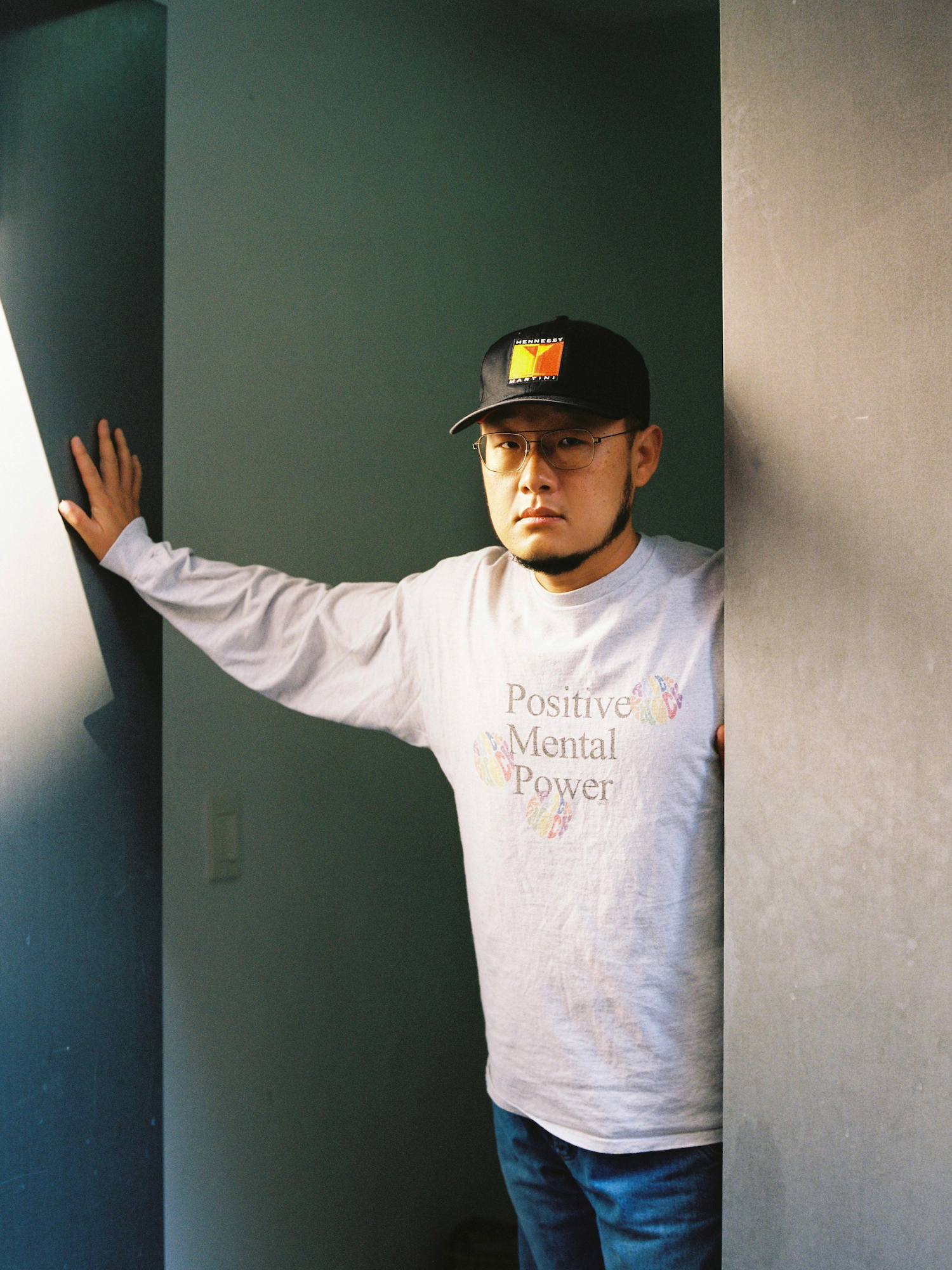Laura Houseley: You work with a small palette of materials and techniques, returning to them repeatedly. What was it like working with a new material, pine, for Vaarnii?
Kwangho Lee: As you said, my method is the process of starting with small units and repetitively putting them together in different ways to create a specific shape or use. It takes a long time to find the best production methods or new possibilities for the material. Working with new materials seems to be a great interest and challenge for creators. But actually, pine is a familiar material to me – it has been used in architecture and furniture for a long time in Korea. So, when I first heard from Vaarnii I was very excited. I wanted to approach pine logs as units coming together to create a shape, rather than simply designing an exterior.
Are there any consistent features or topics that you return to in your work and that we can see in the AA series?
I have continuously thought about how elements come together to create a certain shape and purpose in the AA series. I thought it was like a collection of typefaces or hieroglyphs used a long time ago. Or a collection of squares, triangles, and circles. I wanted to be able to imagine a variety of things, rather than clearly seeing them as furniture.
It sounds like there might be more products that can be made with this approach in pine – do you hope the AA series will grow?
Exactly! I hope the collection keeps growing. I feel it has so many possibilities and I think it has just begun.


You have described the AA series as being about connections, the points where volumes meet. Can you explain this a bit more?
The connection points where the pieces come together are important. If too many were combined, it would be difficult to see the detailed shapes, and if less were combined, it would almost certainly look visually unstable. I created the final shape by adjusting the spacing of the squares and triangles around the central circular pillar. When I checked with Vaarnii, the maximum diameter was fixed on the circular pillar, so naturally everything followed on from that proportion.
What are the qualities of the AA series, and how do you see them being used by customers? They seem as beautifully sculptural as they are functional.
As you said, they can be as furniture, but I hope that they will become a formative element that stands out in the space by itself. Also, they should be demonstrations of the specialness of pine.

Beaker Store, Seoul.

Did you consider the aging process of the pine in your design? I think the mellowing and the yellowing of the pine wood on the AA series will be especially pleasing.
I’m familiar with how pine changes so I’m looking forward to seeing how it alters over time. I think the meaning becomes even more special when materials and time meet.
What a lovely expression; ‘when materials and time meet’. I expect that the time taken to make pieces such as your knitted objects is a consideration. Earlier you mentioned the time you spend researching methods of making and materials. Is time a recurring consideration in your work?
Whenever I work, I always want to make something well, not just with my knot works. Everyone has different criteria for what ‘well-made’ means, but I often imagine that something well-made will exist in the world for a long time. As time passes, so the world around us changes. I can see those changes happening through friends, children. In the end, it seems that things/objects have temporality and the moments of communion with them are piled upon them one by one. I like other things that force us to face the passage of time, such as cross sections of strata accumulated over a long time, wind-weathered rocks, beaches where lava has hardened into stone. I think it’s really wonderful and beautiful when I face things made by time. I would like my work to have an element of that.


Many of your projects are self-initiated and you work a lot in the collectible design area, how has it been working with the team at Vaarnii and making something for mass-production?
Some parts are different from my work process but I don’t think the attitude towards materials is very different from how I usually work. As my job is to have more new experiences, I want to grow with Vaarnii by doing great things together for a long time, just like how the pine gets more attractive as time goes by.
Have you ever been to Finland? If so, what was your impression? Or, if not… what is your impression?
I haven’t been to Finland yet, but I know what a beautiful place it is from countless TV programs, films and books. As someone who grew up in the countryside, standing in front of a great expanse of nature always seems intriguing and moving to me. I really want to go there if I get a chance.

I had suspected (from your Instagram) that you enjoyed spending time amongst nature, so it is interesting to hear that you grew up in the countryside. How has an appreciation of nature impacted your design approach?
My grandparents were farmers and so I was able to observe all these varied processes of making when I was a kid. Things like the tools they made using materials they found around them, raising cows, rice farming and harvesting. I think these special memories gave me a pure and natural interest in making things. Although my work is different, the process of selecting a material, interacting with the material and finding the most appropriate production method, shape, proportion etc for what I want the object to be is probably a very similar process to my grandparents’ work. Making things with my hands is deeply rooted in my genes.



